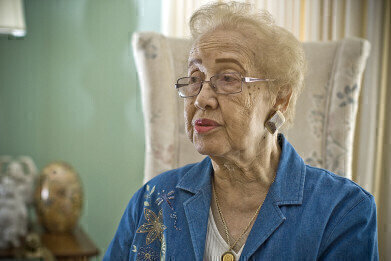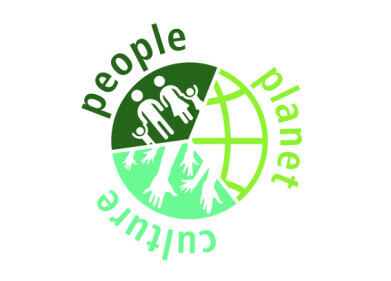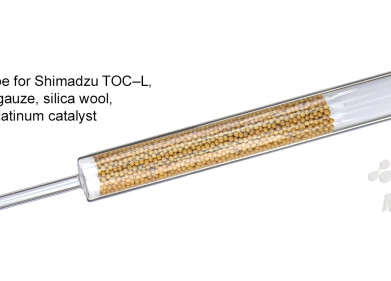Laboratory Products
Women in Physics - Katherine Johnson
Oct 28 2018
Professor Alessandro Strumia’s recent comments about physics being 'invented and built by men' have left many of us shocked and confused. In honour of Dr Donna Strickland's recent Nobel Prize in Physics, we're taking a look back at the women who have paved the way for scientists like Donna.
Our 6-part series will take a closer look at the role of women in physics. Following Lise Meitner and Maria Goeppert-Mayer, we're focussing on Katherine Johnson - a NASA mathematician who has had to face both gender and race discrimination during her career. Keep reading to find out how she overcame both and became one of the most influential women physics has seen…
Katherine's early life
Born in West Virginia, 1918, Johnson was the youngest of four children. From an early age, she showed a great interest and talent for maths. But her education was cut short as her county didn’t offer public schooling for African-American students past the 8th grade.
Katherine’s parents arranged for their children to attend high school at Institute in West Virginia, on West Virginia State College’s campus. Katherine started at the school when she was just 10 years old and graduated at only 14. After graduating high school, she enrolled at West Virginia State, a historically black college.
A love for maths
As a student, she took every maths class and was mentored by some of the greats, such as Angie Turner King and W.W. Schieffelin Claytor, who even added a new maths course just for Katherine. Aged 18, she graduated with degrees in maths and French and took a teaching job at a black public school.
In 1939, she was selected to be one of the first African-American students to enrol in a graduate programme at West Virginia University, where she was studying maths. However, she left after just a year when she fell pregnant.
NACA / NASA
After taking a break to raise her family, Johnson jumped straight back in the deep end with a job at NACA. She worked as a ‘west computer’ or ‘coloured computer’ - African-American women that analysed test data and provided mathematical computations, essential for the early US space programme.
NACA was a segregated workplace meaning Katherine had to eat, work and use the bathroom in a different location than white people. In 1958, however, this changed as NACA was incorporated into NASA, as we know it today. NASA banned segregation and Katherine became a member of the Space Task Group.
2 years into her new role, Johnson co-authored a paper about calculations for placing a spacecraft into orbit – the first of 26 reports that she wrote or co-authored during her career. She was the first woman in her division to be recognised as an author on a report.
In 1962, NASA made history as John Glenn became the first American to orbit around the earth. Behind the scenes, Katherine played a vital role in getting him off the ground. The equations used to choreograph his route had been uploaded onto a computer, but during this time, electronic calculations weren’t 100% reliable. So, before taking off, John requested that Katherine check the calculations by hand, saying – ‘if she says they’re good, then I’m ready to go’.
Eventual recognition
Despite her heavy involvement in getting men into space, Katherine was still hidden behind the scenes until 2015, when she received the Presidential Medal of Freedom from President Barack Obama. She received this huge honour for her pioneering work in the fields of STEM (science, technology, engineering & maths).
More than 75 years after she dropped out of West Virginia University to raise a family, Katherine received an honorary doctorate degree. NASA also named a building - the Katherine G. Johnson Computational Research Facility - after her in 2016.
In the same year, a film called ‘Hidden Figures’ was also released, based on the life and work of the ‘west computers’. Be sure to check it out for a deeper look into the impressive feat of African-American women overcoming discrimination to produce ground-breaking work.
It's not just space exploration that has a lot of work behind the scenes. Take a look at ‘Characterising Unknowns: Behind the Scenes of Chemical Investigation’ to find out about how unknown materials and substances are identified effectively and precisely. Be sure to check out our next post too, on the work of Cecilia Payne-Gaposchkin.
Digital Edition
Lab Asia 31.2 April 2024
April 2024
In This Edition Chromatography Articles - Approaches to troubleshooting an SPE method for the analysis of oligonucleotides (pt i) - High-precision liquid flow processes demand full fluidic c...
View all digital editions
Events
Apr 22 2024 Marrakech, Morroco
Making Pharmaceuticals Exhibition & Conference
Apr 23 2024 Coventry, UK
Apr 23 2024 Kintex, South Korea
Apr 23 2024 Seoul, South Korea
Apr 24 2024 Jakarta, Indonesia

.jpg)


.jpg)













